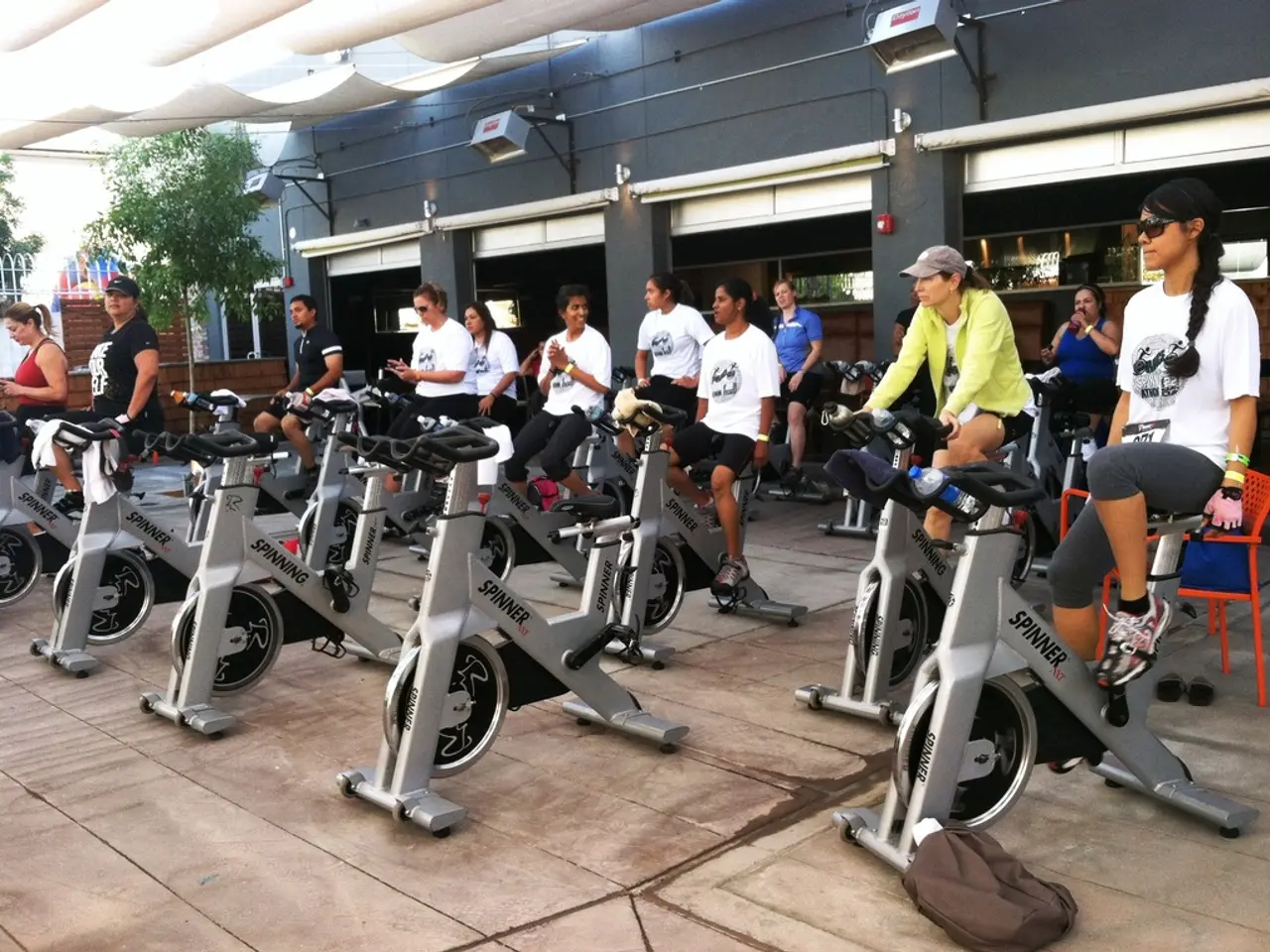To reach optimal strength, what level of effort should you exert?
Feeling drained after a tough workout? You might wonder if pushing yourself to the absolute limit every session is the only way to build muscle. Well, think again! Recent research has flipped the script, suggesting that working at a slightly lower intensity could yield similar results.
"So, are we making progress or merely tiring ourselves out?" muses David Frost, an associate professor in the kinesiology department at the University of Toronto. The answer lies in how hard you're really working.
When starting out with strength training, it can be tricky to gauge how intense your workouts should be. Leaning into what failure really feels like and recognizing when to push that far can help establish a sustainable and safe strength training routine.
What Exactly is Training to Failure?
In strength training, failure comes in two flavors: technical and muscular. Technical failure occurs when you can't complete another repetition with proper form, forcing you to rely on other muscles and joints to lift the weight. Muscular failure strikes when your muscles are so fatigued that lifting the weight becomes impossible.
Although training to failure can build muscle mass, it's important to weigh the risks against the benefits. Overdoing it in a single workout can leave you impaired and less capable in the days that follow. Opting for poor form to push through that extra rep also ratchets up the potential for injury.
How Hard Should You Really Be Working?
For newcomers to strength training, mastering proper form is vital before piling on the weight. Begin with body weight exercises before adding resistance, focusing on form rather than the number of reps.
Next, concentrate on how your muscles respond during a set. Use the 'Reps in Reserve', or RIR, scale to determine the optimal weight for a full set. Estimate how many more times you could lift the weight before reaching failure, and aim to choose a weight where you still have a few reps "in reserve" at the end of the set. The RIR method allows you to adjust your workouts based on factors like stress, hormonal fluctuations, and sleep patterns, instead of sticking to a set weight.
The Goldilocks Principle of Strength Training
As a novice lifter, your muscles will respond rapidly to training, meaning that even when you've got a few reps left in the tank, you'll still see progress. As you become stronger, research indicates that stopping two or three reps before failure may be ideal for maximizing muscle growth. When you're able to repeat the same number of reps for two or more weeks in a row without adding weight, it's time to up the ante and see how it affects your sense of effort.
When you consistently practice an exercise with proper form, it can be beneficial to occasionally train to failure to refine your perception of exertion. However, "if you don't train to failure, you don't know how far away from failure you are," says Brad Schoenfeld, a professor in the exercise science program at Lehman College.
Championing patience and consistency over brute force, professor Frost advises aiming to push yourself a little harder each day, striving for progress rather than exhaustion. When used judiciously, the exhilaration of reaching maximal effort can have its place in your workouts. Nevertheless, stacking up hard work over time is the key to reaping the benefits of strength training.
Article originally appeared in The New York Times
Sources:
- [1] "Effects of High-Intensity Interval Circuit Training, Traditional Resistance, and Sprint Interval Training on Skeletal Muscle in Older Men." European Journal of Applied Physiology. 2017.
- [3] "Effects of 8 versus 16 weeks of High-Intensity Interval Training and Resistance Training on Muscle Strength, Body Composition, and Cardiorespiratory Fitness in Previously Sedentary, Middle-Aged, and Older Adults." Journal of Strength and Conditioning Research. 2018.
- [4] "Response of Skeletal Muscles to High-Volume Resistance Training." Journal of Applied Physiology. 2005.
- David Frost, an associate professor in the kinesiology department at the University of Toronto, muses, "So, are we making progress or merely tiring ourselves out?"
- In a health-and-wellness context, sustainable fitness-and-exercise routines encourage a Goldilocks Principle approach, aiming for a level of exertion that won't lead to injuries or overexertion.
- For novice lifters, it's crucial to learn proper form in resistance training: start with body weight exercises before incorporating additional resistance, and focus on the muscles' response during a set using the 'Reps in Reserve' (RIR) scale.
- With the right balance of intensity and rest, science reveals that training at slightly lower intensities can yield similar muscle gains as going to failure, promoting long-term health and wellness growth.





